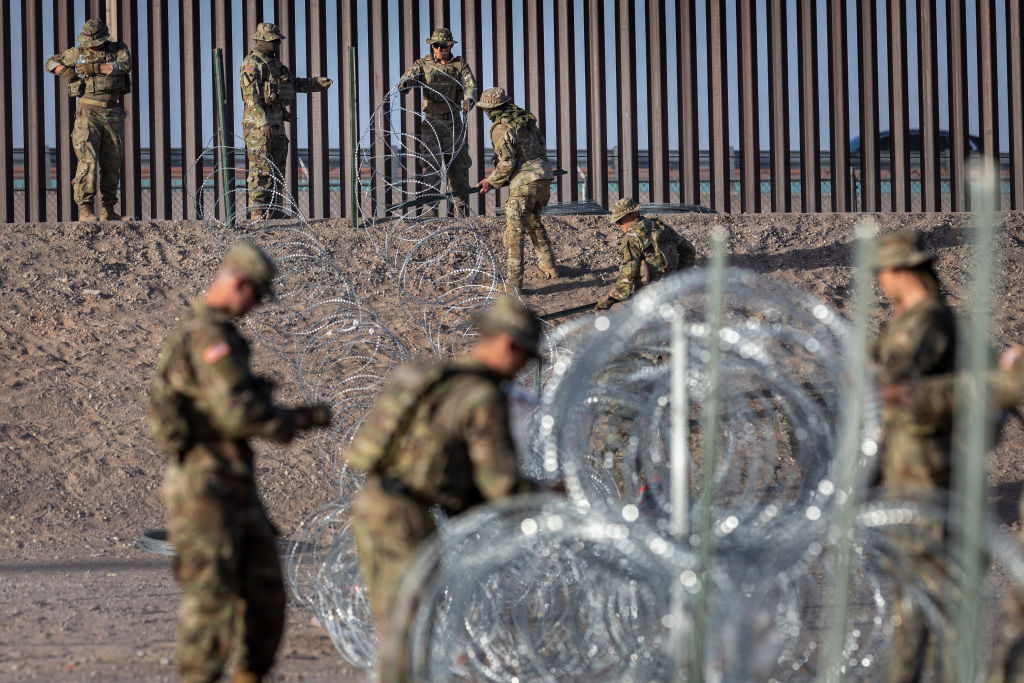In Reversal, Biden Moves to Expand Border Wall
The move comes after the President vowed to not build "another foot” of Donald Trump's border wall in 2020.


When he was running to unseat Donald Trump in 2020, Joe Biden promised there would be “not another foot” built of the border wall, a divisive manifestation of Trump’s four-year crackdown on migration into the country.
Now Biden is adding to Trump’s wall.
[time-brightcove not-tgx=”true”]As the country sees a surge of migrants crossing into the country, the administration is moving forward with construction of 18-foot tall steel fencing along about 17 miles of land near the Rio Grande in south Texas, according to a notice published in the Federal Register on Thursday. The notice describes the area as one where Border Patrol agents have seen high numbers of people crossing between ports of entry.
“There is presently an acute and immediate need to construct physical barriers and roads in the vicinity of the border of the United States in order to prevent unlawful entries into the United States.” Homeland Security Secretary Alejandro Mayorkas wrote in the notice.
The notice cites powers given to the Secretary of Homeland Security to waive environmental laws and other restrictions to speed up the construction of barriers and roads along the U.S. border.
The Border Patrol’s Rio Grande Valley sector in Southeast Texas is considered an area of “high illegal entry,” the notice states, and Border Patrol agents encountered more than 245,000 people trying to enter the US between ports of entry in that area during the 10 months leading up to early August. That rise in entries, Mayorkas stated, prompted him to use his authority to “install additional physical barriers and roads.”
The Associated Press reported earlier on the Federal Register notice.
Border Patrol agents and experts have said physical barriers at the border can be helpful in the right locations. In areas close to cities and Border Patrol stations, barriers can slow down migrants trying to cross between ports of entry or direct them to cross in areas with more surveillance. But in remote areas, where it can take hours or days to patrol, Border Patrol agents find sensors and cameras are more useful than barriers, which are expensive and time-consuming to maintain and repair.
During his 2016 presidential campaign, Trump promised to build a wall across the entire 2,000-mile border. By the time he left office, he’d installed just over 450 miles of tall steel fencing, most of it replacing existing barriers. Trump only constructed 52 miles of new border wall.
Four years later, Biden was clear as a presidential candidate that he wasn’t going to add to the border wall. “There will not be another foot of wall constructed on my administration,” Biden said during an interview in August 2020.
On his first day as President, Biden filed a formal proclamation that halted construction of Trump’s border wall and ended Trump’s declaration of a national emergency on the southern border. “It shall be the policy of my Administration that no more American taxpayer dollars be diverted to construct a border wall,” Biden wrote in the Federal Register on Jan. 20, 2021. That proclamation blocked funds for wall construction that Trump had ordered diverted from military spending and other projects.
Biden also paused all funds that Congress had already designated for border wall construction and ordered those projects be reviewed. “Building a massive wall that spans the entire southern border is not a serious policy solution,” Biden wrote. “It is a waste of money that diverts attention away from genuine threats to our homeland security.”
On Thursday, Biden ended that pause, using money Congress allocated in 2019 to build high barriers along a section of the Rio Grande in Starr County, Texas, that winds south from the Falcon Dam to McAllen. Some of the new steel bollards will run through the Lower Rio Grande Valley National Wildlife Refuge, raising concerns that the barriers and road construction needed to maintain them will disrupt fragile wildlife habitat and animal migration patterns.



